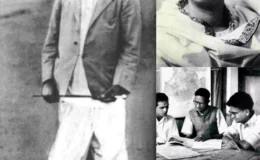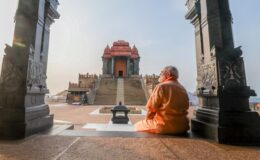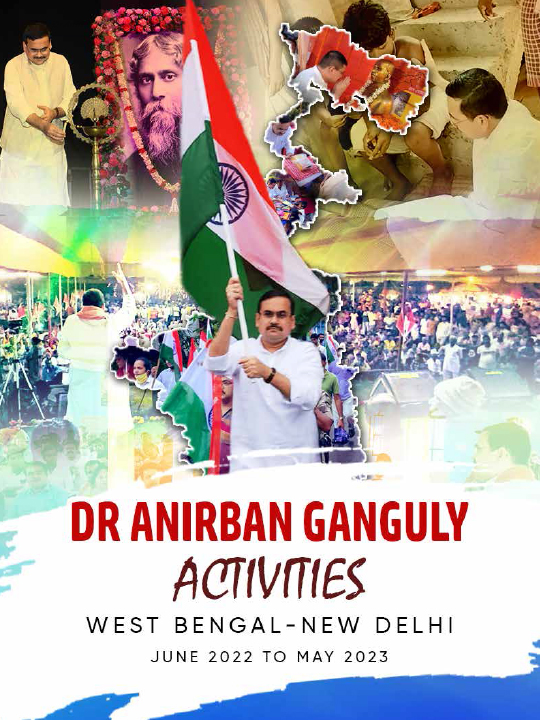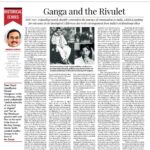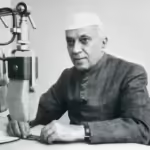PRESERVING NATION’S HERITAGE IN WORDS
- By : Anirban Ganguly
- Category : Articles
The Modi regime should seriously look into salvaging the National Mission for Manuscripts. An autonomous status will be welcome. It’s a civilisational imperative
In 2007 it was largely because of the efforts of the New Delhi-based National Mission for Manuscripts that the collection of Rigveda manuscripts in the possession of the Bhandarkar Oriental Research Institute at Pune saw inclusion in the United Nations Educational, Scientific and Cultural Organisation’s unique effort at preserving humanity’s civilisational memory and expressions, ‘Memory of the World Programme’. Working ‘to guard against collective amnesia’, the programme, has over the years, developed a register of the world’s priceless documentary heritages that are being gradually lost not only due to the vagaries of nature but also because of our callousness towards our past civilisational achievements and their records. This inclusion was not only a recognition of the work of the National Mission for Manuscripts but also indicated the necessity of bodies such as these for preserving priceless documentary evidences of our civilisational evolution.
Ever since its inception in 2003 during the previous NDA regime, the National Mission for Manuscripts and its team of dedicated epigraphists, scholars and researchers have systematically and determinedly persisted in their mission of preserving India’s vast manuscript reserves — said to be the largest in the world. What makes the task of discovering and preserving Indian manuscripts more challenging is the fact that unlike in the West, manuscripts in India, as one of the erstwhile directors of the National Mission for Manuscripts pointed out, are scattered not only in institutional repositories but also in “private collections, in temples, in monasteries, in libraries and private households” as well.
A large number of Indian manuscripts that were siphoned away to Western repositories during colonial rule and later remain to be identified and documented — a task that is daunting not only by its magnitude but also by its legal and institutional intricacies. Vast epigraphical and manuscript reserves with connection to Indian civilisation also abound in the Southeast Asian region. A concerted and institutional effort to discover these and to develop linkages with organisations and groups working in this area in the region could go a long way in further enriching the Indian collection and offer an opportunity to re-forge some substantial cultural linkages and collaborations in the region. The ongoing work in this field by institutions such as the École Française D’Extrême Orient, may serve as an example of the pattern of institutional collaboration and that may be planned for these regions.
Working against great odds, the National Mission for Manuscripts had, by the end of 2013, already succeeded in documenting around 37 lakh manuscripts and has succeeded in establishing a large number of regional centres across the country that coordinate in this vast mission of acquisition, notification and preservation. Under its preservation and digitisation programme the National Mission for Manuscripts team has through a herculean effort, conserved more than three crore pages of manuscripts and has digitised nearly two crore manuscript pages. These have been painstakingly preserved in the institutional server and DVDs with the object of establishing someday a National Digital Manuscript Library.
In a forward-thinking move and keeping in mind the dwindling generation of epigraphists and manuscript experts, the National Mission for Manuscripts’s dynamic outreach programme, the brainchild of a group of young and energetic experts, has already managed to train around 400 scholars, through short courses and workshops, in the art of manuscript preservation and another 500 in deciphering archaic scripts and languages of India. Yet, despite such achievements, in the last 10 years the National Mission for Manuscripts has been allowed, by the previous regime, to wallow in uncertainty. It is ironical that the body has no permanent infrastructure, has not had a director for quite a while with the institution itself surviving on extensions. Budgetary allocations have drastically dwindled over the years severely hampering other initiatives and plans. What is more alarming is that despite a sanctioned strength of 51 posts only 30 posts have been filled up until now at the National Mission for Manuscripts.
Perhaps the new dispensation could seriously look into salvaging the National Mission for Manuscripts, an autonomous status could be a first step — it is a civilisational imperative.

